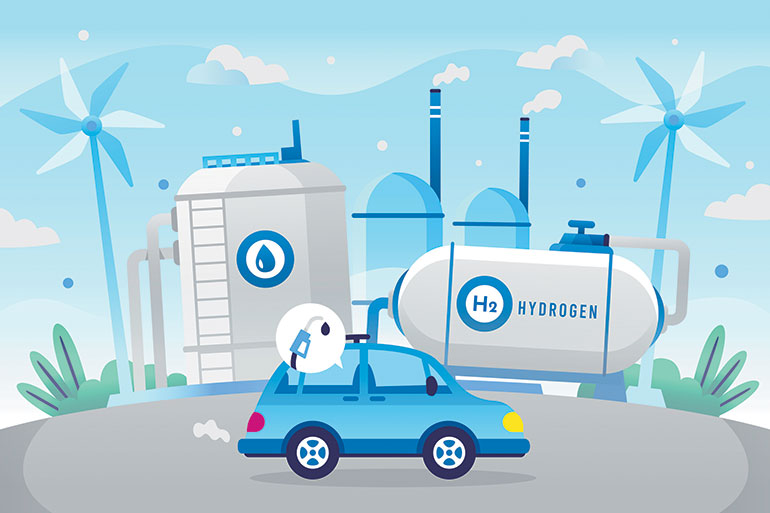Promising innovations for a net-zero world

Sustainability is no longer a choice. It is a driving need for all businesses. Climate change is a challenge too vast for any single entity to tackle alone, and it demands cooperation and collaboration from all segments of society, across all sectors and industries. After all, there is no profit to be made on a ruined planet.
It is fortunate then that the private sector, with its enterprising minds and thirst for opportunity, is well-positioned to lead the charge. Necessity has always been the mother of invention, and there has never been a necessity greater than this.
At present, no single invention can be the sole harbinger of a net-zero future, where we remove, recapture, or repurpose more carbon from the atmosphere than we emit. But together, these innovations bring us closer to turning sustainability from an aspiration into a reality.
The following technologies are the most promising innovations that the world’s foremost visionaries have come up with.
Sail-Powered Shipping
The transportation and logistics industry is one of the biggest emitters of greenhouse gases, as the industry almost entirely depends on internal combustion engines powered by fossil fuels. According to the International Energy Agency, transport accounts for over a third of all carbon emissions from end-use sectors.
As such, it is also one of the industries that prove the most difficult to transition into a net-zero scenario. That requires transport sector emissions to fall by around a quarter in five years, no matter how much transport demand continues to grow.
With such a pressing future, some European and US companies in the shipping segment of the industry are finding inspiration by looking to the past — back to the age of sailing.
Shipping emits about a billion tons of carbon dioxide a year, accounting for 3% of global greenhouse gases. As the demand for transport continues to grow, emissions are projected to balloon up to 250% by 2050 if no action is taken.
Sail-powered cargo ships, which rely almost completely on wind power, can leave a sizable impact in the shipping industry’s carbon footprint without compromising speed or efficiency. Pure-sail vessels like the Grain de Sail II, for instance, are able to hold 350 tons of goods and can cross the Atlantic in a little over two weeks.
According to Clarksons Research, which tracks shipping data, wind-assisted vessel numbers are growing at unprecedented rates, even as they collectively comprise a tiny fraction of the global fleet. By its count, 165 cargo ships are already using wind to some degree or are due to have wind-assisted systems installed.
Hempcrete
In terms of carbon footprint, the buildings and construction sector is by far the largest, accounting for a staggering 37% of global emissions according to the United Nations Environment Programme. Decarbonizing building materials like cement, steel, and aluminum is one of the most urgent challenges we face today, as their design, production, and deployment contribute immensely to climate change.
Hempcrete, meanwhile, is carbon negative. The hemp it is made out of is easily renewable, taking only 100 days to grow, while it also provides regenerative benefits for soil. Most importantly, it can be used in a range of industries, from building to textiles, as it is purported to have insulation, moisture- and fire-proof qualities.
In the United Kingdom, Public Realm Lab’s Powerhouse Place recently won the National Award for Sustainable Architecture, bringing hempcrete into the spotlight. Meanwhile, in Australia, public buildings are being made with the material like in the University of Tasmania’s forestry building and the Lithgow Women’s Shed, while entities like the Australian Hemp Masonry Company are promoting its use to architects and builders.
Green Hydrogen
Breakthroughs in renewable energy continue to flourish. In the European Union, the REPowerEU Strategy of 2022 aims to produce and import 10 million tons of green or renewable hydrogen by 2030 — with a long-term target of covering about 10% of the region’s energy needs by 2050 and significantly decarbonizing energy-intensive industrial processes and the transport sector.
Renewable hydrogen is a ‘renewable fuel of non-biological origin’ (RFNBO), produced through the process of electrolysis, using renewable electricity to split water into hydrogen and oxygen.
The EU is exploring its potential at decarbonizing sectors where other renewable alternatives might be unfeasible or more expensive. Additionally, it can be used to produce new industrial products, such as green fertilizers and steel.
Of course, a sustainable future won’t be built on one of these breakthroughs alone, or even all these three. A net-zero future demands a collective, global push for innovation. The road is long, and the stakes could not be higher, but with each step forward, each new discovery, we get a little bit closer. — Bjorn Biel M. Beltran



